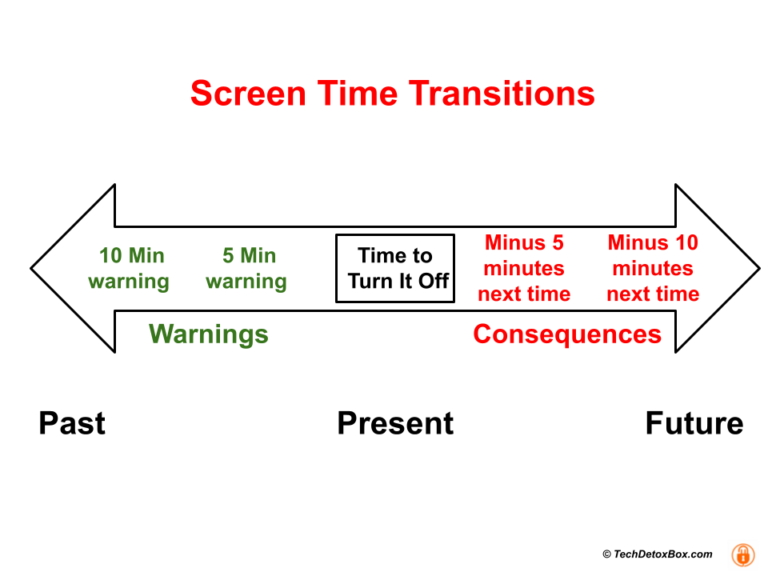
“Never get in between a drug addict and their drug”.
When parents attempt to take devices away from kids, what might follow is an extreme emotional meltdown – the dreaded “tech tantrum”. Children are screaming, raging, smashing things (including expensive devices they are addicted to), threatening parents with property damage and bodily harm, and even assaulting them physically. All hell breaks loose when it’s time to transition to some normal human activity: sleep, family dinner, or homework. Here is a Wall Street Journal video explaining the phenomenon.
What happens when an addict loses access to his drug? They get violent. When the object of addiction is taken away, drug addicts hurl verbal and physical abuse toward loved ones who are trying to help. In the same way, digitally addicted kids lash out when parents try to limit their screen time.
Tech tantrum is withdrawal from “digital heroin”.
Why Do They Explode?!
What causes the meltdown when it’s time to leave the digital world? Why is the moment of transition back to reality so painful? Kids do not throw a tantrum when we tell them to put toys away and go to bed. What’s different about turning off the gaming console? Why closing Instagram and giving mom the phone for the night triggers World War 3?
Dr. Nicholas Kardaras, a renowned psychologist and the author of Glow Kids: How Screen Addiction is Hijacking Our Kids, writes: “I have found it easier to treat heroin and crystal meth addicts than lost-in-the-matrix video gamers or Facebook-dependent social media addicts.”
What is it in a child’s brain that triggers a tech tantrum?
- When dopamine stops, so does the pleasure. Screen addiction hijacks the reward system of the brain, trapping kids in a cycle of instant gratification of random rewards. According to hundreds of clinical studies, a young brain on video games looks like a brain on drugs. The pleasure centers are continuously getting hit with feel-good dopamine, and when it stops flowing, the child feels the awful effects of withdrawal. Explosive tech tantrum follows.
- Brain under construction. Children do not have a fully developed prefrontal cortex to remind them to self-regulate. This part of the brain is the seat of rationality and self-control, but it’s not fully mature until the age of 25. There are no brakes for the emotions stuck in overdrive.
- Never DONE – by design. We interrupt them when they are “in the middle of something”: a level of the game, or a social media storm. Of course it is annoying to stop when you are not “DONE”! But they are never DONE – this unfinished business is by design. Screen activities are made to be bottomless pits without natural stopping points, because this is how tech companies make money. Video games’ AI monitors players in real time and throws new enticing missions their way the moment it senses they are about to quit. Social media feeds have an infinite scroll feature – what if something incredible is just about to appear? User engagement is the ultimate goal of every app – and they do not care if the user in question is a child who needs to go to bed.
- Novelty bias. Evolution wired our brain to prefer novel experiences, which screens deliver in abundance. Real world just cannot keep up: it’s slow and static in comparison. No flashing lights and spectacular monsters every second. Boring!
- Path of least resistance. The brain prefers to conserve energy, choosing “easy and fun” over any mental effort. Devices do all the work of imagination for the child, the only effort required is to keep eyes open. Turning off the screen means switching back to harder things – like independent thinking or talking to real people. The brain does not want to do work – and rebels.
- We are taking them away from their online “friends” who will continue exciting video game missions and social media gossip without them. Their social standing crumbles, and it’s the parents’ fault.
- Sleep deprivation resulting from digital overstimulation of the brain is a huge risk factor for lack of emotional regulation. An overtired kid is a nervous wreck that explodes at the slightest provocation.
- Lack of exercise. Screens prevent kids from moving their body, which is the best natural antidote to irritability.
- Anger. Adrenaline is pumping through the bloodstream of the child playing a fast-paced, competitive video game. It’s the hormone of violence, of aggression. When the parent turns off the gaming console, dopamine drops – taking away the pleasure, but adrenaline remains – and the child explodes into the tech tantrum.
The Damage
- Parent-child relationships become collateral damage. Kids literally do not hear us, hyper-focused on the screen. We are background noise to be ignored – until we start yelling and yanking devices out of their hands. Parents’ nerves are ripped to shreds, while kids scream: “I hate you!” Family harmony is road kill.
- Expensive devices get broken at the moment of amygdala hijack as negative emotions take over and override any rational thought. Kids throw the phone at you, smash the tablet, or hurl the gaming console into the TV screen. Self-control is essential to prevent destructive behavior, but it is still under construction in a young brain. Sometimes kids (mostly boys) break devices in a fit of “gaming rage”: they are so angry with whatever is happening on the screen, they break the screen itself. The tally of broken iPads, Kindles, and chromebooks in our family currently stands at 7. No worries – when the kid cools down, he would demand that you dish out another $400 to replace the iPad he just broke.
- Physical violence toward the parent. Our sweet children turn into monsters when their digital drug is taken away. To make matters worse, violent video games desensitize them to violence: child psychiatrists call first-person shooter games “murder simulators”.
- Destruction of the family. This one is an existential threat from an unexpected source – the government. When her son was spending too much time on the phone, Amy (name changed to protect privacy) noticed it was making his neurological symptoms worse. Late one night, Amy had to grab the phone out of his hands because he refused to turn it off and go to bed. Angry with his mother, the next day the boy complained to his therapist about his mother using physical force against him (a grown teenager, he was the one physically stronger). Despite medical confidentiality, a therapist is legally obligated to report to authorities if child abuse is even suspected. Child Protective Services showed up at Amy’s door the next day, throwing the family into a humiliating investigation and threatening to take their children away. They were eventually cleared of all charges, but severely traumatized.
How to Stop Tech Tantrums
Transitions
Sudden transition from fun to reality when an angry parent rips the iPad out of their hands is traumatic. I use a system of warnings with my kids to prepare them for the pending separation from the device: it’s 10 minutes, 5 minutes, it’s time to turn it off. If it does not happen, I count to 5, then switch to consequences: taking away 5 minutes of screen time tomorrow, 10 minutes, etc. – you get the idea. A timer can serve a similar purpose with younger children. You mean it and you follow through.

Cut Access Remotely
- Every major operating system has built-in options to pause the device.
- Advanced parental control routers have the functionality to cut off WiFi.
For our readers we negotiated an exclusive promo code TECHDETOX for 15% off Gryphon Advanced Parental controls router.
3. A number of third-party screen time management apps allow you to cut the cord instantly if your child does not cooperate.
Warning: kids can and do circumvent parental controls, so our blanket policy is to take devices away. No temptation left behind. Another warning: tech tantrum might still happen, plus a frustrated kid could break a device that suddenly turns off.
Routines
Establish screen time rules around bedtime, homework, and mealtime. Once children get used to the routine, they are less likely to push the boundaries.
Fill the Void
Kids’ imagination is compromised by digital distractions – they need our help to fill their life with fun non-digital experiences and face-to-face relationships.
- It’s Legos, not Minecraft;
- Books, not Fortnite;
- Hikes, not Netflix;
- Crayons, not iPad.
Still bored? Great, go work on that imagination of yours.
Rewards
Take a page from the playbook of addictive technology and use the same tactics for good: reward compliance with an immediate positive reinforcement. Offer some quality time to your child: reading a book together or giving them a back rub. Even bribing them with chocolate is better than screen time overdose.
Model Good Behavior
Stay calm, do not match a tantrum for a tantrum. “Kind but firm” is the parenting approach recommended by experts: Parenting with Love and Logic: Teaching Children Responsibility, by Foster Cline and Jim Fay. Your job is to help your child calm down, and nothing compromises their sense of security more than a parent who is emotionally falling apart, instead of providing a safe harbor for their own turbulent feelings.
Physical Safety
Tech tantrum of a toddler is not cute, but the tech tantrum of a grown teenager can be dangerous. What if his raging over gaming privileges threatens the physical safety of the family? What do we do – call the police? In a life-threatening situation, yes.
An extreme emotional meltdown is a legitimate mental health crisis, which warrants help from the state.
When a teen is out of control, there is another option besides the emergency room or a police station: calling a mobile crisis response team that will come to the home to diffuse a situation. Behavioral health services are managed by state departments of health. Substance Abuse and Mental Health Services Administration treatment services locator by zip code can be found here.
Therapy
A particularly violent outburst could land a kid in a psychiatrist’s office. Especially if the child – usually a boy – also has a neurological diagnosis. Unfortunately, behavioral therapy could be a waste of time with these children: if digital addiction already took hold, a therapist cannot convince them to develop ownership and responsibility. The locus of control has to remain external until their brain matures. In other words, a kid’s self-control is the parents’ job. Therapy becomes a teaching tool for parents that boils down to simple advice:
- Ignore negative behavior, by reacting you may be reinforcing it.
- Reward positive behavior, try to identify incentives in addition to screen time.
- Tie rewards to good behavior and make them immediate, not remote.
- Keep micromanaging and be patient.
Detox
When the problem is really bad, tech addiction experts recommend a digital detox to reset a child’s brain. Desperate times call for desperate measures.
When parents are faced with a tech tantrum, giving in is the worst thing to do. If the child sees that their tech tantrum is effective, parents can be sure there would be an explosion every night. It’s better to endure short-term pain but stick to your guns. In our house, if the parent is attacked with a tech tantrum, screen time is cancelled for the next day.
At the end of the day, the single best thing parents can do to prevent tech tantrums from happening is to have kids spend long uninterrupted stretches of time in the real world, unplugged from digital addiction.











